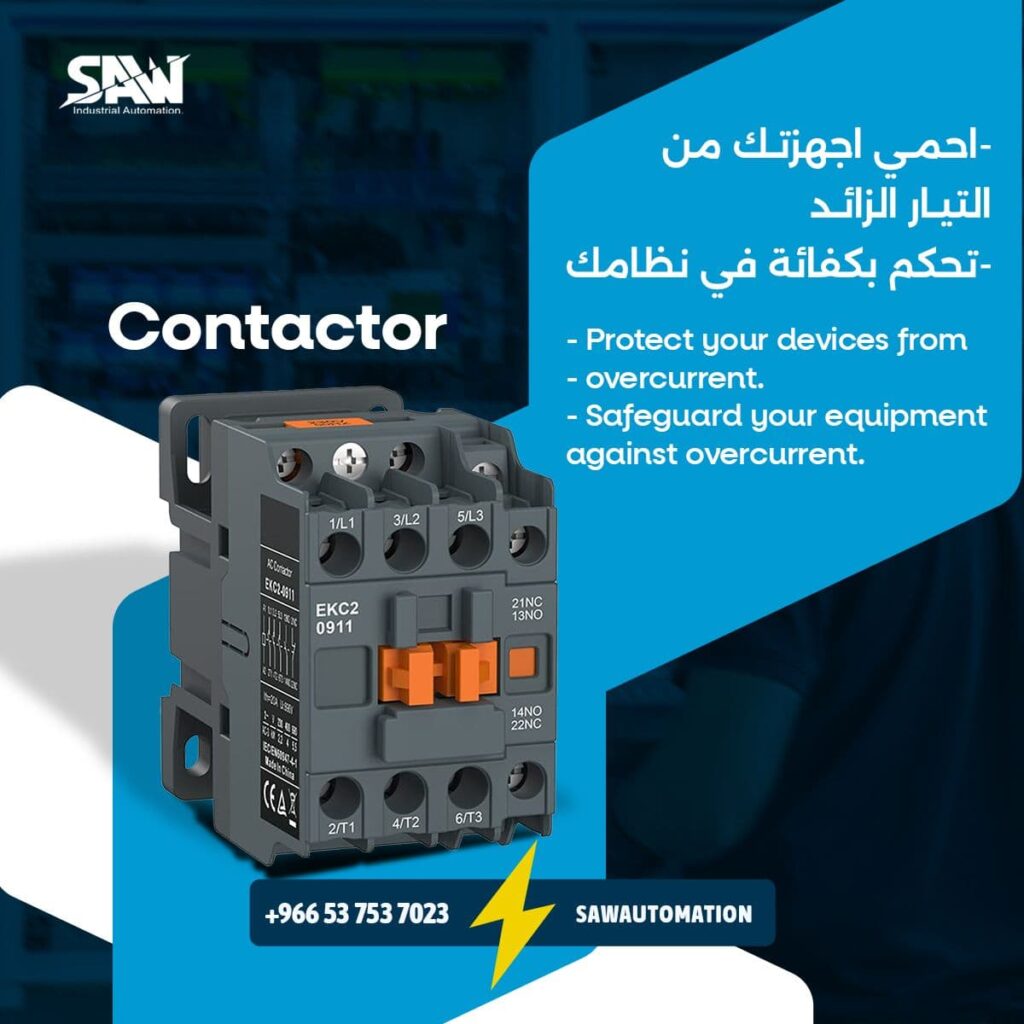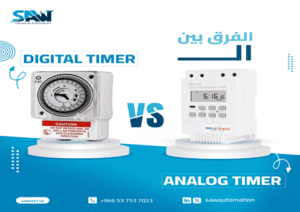The Contactor Device and its Role in Energy Efficiency Control

The Contactor Device and its Role in Energy Efficiency Control.The Contactor Device and Its Role in Enhancing Energy Efficiency
The contactor and its impact on energy-efficient control
The Contactor Device and Its Role in Energy Efficiency
Saw Automation & Electrical Parts
The contactor is a fundamental tool used to control high-voltage electrical circuits, and it plays a key role in maintaining efficient and stable operations. In this article, we will explore how this device works, its effectiveness in optimizing energy efficiency, and how to select the right type for your applications.
What Is a Contactor?
A contactor is an electrical switching device used to control electrical loads by starting motors, reversing their direction, regulating their speed, or reducing it. There are many types of contactors, each operating with a different mechanism and offering its own advantages.
It can also be defined as an automatic switch that performs the task of connecting or disconnecting an electrical circuit, similar to a relay. A typical contactor consists of several contacts, where the main contact handles the power circuit while auxiliary contacts handle the control circuit.
How Does a Contactor Work?
Before understanding how a contactor operates, we must first identify its main components:
- Main contacts that belong to the power circuit and can withstand high current levels.
- Auxiliary contacts dedicated to the control circuit and rated for lower current.
The contactor operates by energizing its coil, which creates a magnetic field that pulls the moving core toward the fixed core. This action changes the state of the contacts—closing the normally open points and opening the normally closed ones. This state remains active until power is removed from the coil, allowing the contacts to return to their original position.
Applications of Contactors
The primary purpose of a contactor is to connect or disconnect electrical power from high-load equipment. Its most common uses include:
- Starting or stopping electric motors.
- Controlling HVAC and cooling systems.
- Switching electric heaters on and off.
- Operating lighting circuits.
- Managing renewable-energy applications.
- Using it in automatic transfer switching between two power sources.
How Does a Contactor Improve Energy Efficiency?
The contactor plays a major role in enhancing energy efficiency. Some of its most significant benefits include:
- Helping reduce energy consumption by up to 90% in industrial motors.
- Minimizing equipment failures when used with overload relays.
- Lowering carbon emissions by up to 30%, supporting sustainability goals.
Its impact grows even further when selecting the correct contactor type matched with the application.
Types of Contactors
There are several types of contactors classified according to their usage:
Power Contactors
Suitable for heavy loads; equipped with strong main contacts. Commonly used in:
- Industrial motors
- Heavy equipment
- Power transformers
Control Contactors
These contain only auxiliary contacts and are used in:
- Medium-voltage control circuits
- Lighting systems
- Heating element control
How to Choose the Right Contactor
To ensure optimal performance, consider the following:
- Select a contactor rated 1.5 to 2 times the motor’s current.
- Motor current calculation:
– kW × 2
– HP × 1.5 - Choose a trusted brand for longer lifespan and accessible maintenance.
Difference Between a Contactor and a Circuit Breaker
1. Function
- The contactor: used for control (ON/OFF operations).
- The circuit breaker: used for protection against faults or overloads.
2. Mechanism
- A circuit breaker works through thermal or magnetic tripping.
- A contactor operates using a magnetic field generated by its coil.
3. Applications
Contactors are used more widely because they are designed for continuous switching, whereas circuit breakers are dedicated to protection only.
4. Lifespan
Contactors generally offer a longer lifespan and require less maintenance compared to circuit breakers.
In conclusion, the contactor plays a vital role in protecting electrical systems, enhancing energy efficiency, and improving overall operational performance. With many types available, you can always find the right contactor for your specific industrial application.



